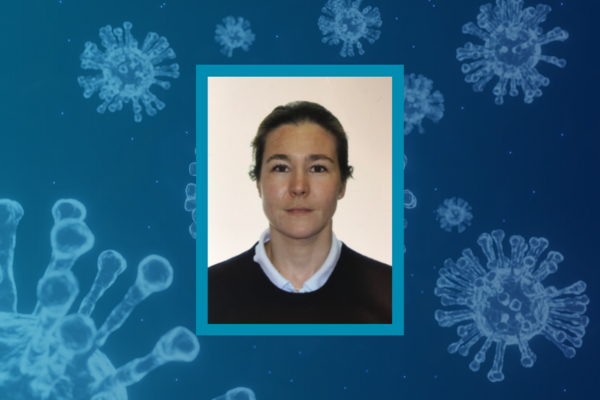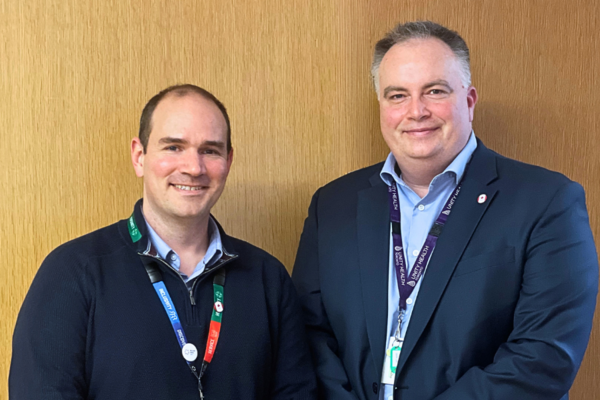Forensic pathology and its role in COVID-19 in Ontario

The Ontario Forensic Pathology Service (OFPS), led by Dr. Michael Pollanen, Professor in Laboratory Medicine & Pathobiology in the Temerty Faculty of Medicine, performs over 7,000 coroner-ordered autopsies each year.
The OFPS has played a vital role in responding to the COVID-19 pandemic. Below is an overview of some of the major developments in 2020.
Adapting to the pandemic
During the early phase of COVID-19, the Ontario Forensic Pathology Service (OFPS) focused on maintaining ‘essential’ medicolegal autopsies for public death investigations. The priority was to protect frontline staff through social distancing measures at the Provincial Forensic Pathology Unit (PFPU) in Toronto, and the procurement and conservation of personal protective equipment (PPE).
If an autopsy was required to answer medicolegal questions, methods were modified to limit aerosolization which is a way to spread the virus, such as targeting procedures and dissections through the application of forensic imaging technology.
The OFPS modified guidelines were shared widely to inform best practice and the Chief Forensic Pathologist (CFP), Dr. Michael Pollanen, worked closely with the Canadian and Ontario Association of Pathologists and international partners to translate timely knowledge.
Initially, because the COVID-19 deaths were natural and, therefore, not reportable under the Coroners Act, very few autopsies were conducted. However, in some cases where medicolegal issues necessitated an investigation by a coroner, autopsies were conducted.
Dr. Pollanen performed the first COVID-19 positive autopsy on March 17, 2020 at the PFPU. The first cases related to COVID-19 were referred for autopsy for various reasons, including to support death investigations in long-term care facilities. Since March 2020, more than 100 COVID-19 cases have been examined at the PFPU.
The PFPU accepted the role of postmortem screening of bodies under coroner’s warrants for coronavirus infection using nasopharyngeal swabs, in partnership with coroners and public health.
This activity was happening at a time of an unprecedented high sustained autopsy caseload at the PFPU, including a surge in opioid related deaths. Since the beginning of the pandemic, the PFPU has performed an average 120 medicolegal autopsies per week.
Vaccine collaboration: safeguarding public health
The OFPS is collaborating with the University of Toronto and Providence Therapeutics, a Toronto-based biotech company, to help develop vaccines for COVID-19.
The collaboration is based on an experimental mouse model where a human gene is delivered into mice to make them susceptible to SARS-CoV-2. The mice are then infected with the virus. Through histologic examination, the OFPS can evaluate whether inflammation in the lungs of the infected mice is similar to the pathology observed in the lungs of people who die of COVID-19.
The OFPS is in a unique position to participate in this project because of its direct experience with the effects of the SARS-CoV-2 in the human lung since OFPS pathologists are the only ones in Canada to have conducted several autopsies of fatal cases of COVID-19.
The research program reached a milestone in December 2020 with the approval by Health Canada of clinical trials for the first Canadian vaccine developed and manufactured by Providence Therapeutics, which commenced in January 2021.
- Preclinical evaluation of a SARS-CoV-2 mRNA vaccine PTX-COVID19-B on pre-print server bioRxiv
Pathology of COVID-19
From a greater public health perspective, it is important to understand the pathology of the disease (how the virus specifically affects the body) and the greater societal impact (how the disease and the changes to daily life that come along with public health measures affect the population overall). To this end, the OFPS identified a gap in the international scientific literature and has studied and published a paper on the post-mortem radiologic and pathologic findings of COVID-19. More studies will follow on the pathological features of COVID-19, including elucidating immunohistological changes.
- Andrew S. Williams, Jennifer M. Dmetrichuk, Patrick Kim, Michael S. Pollanen. 2021. Postmortem radiologic and pathologic findings in COVID-19: The Toronto experience with pre-hospitalization deaths in the community. Forensic Science International, Volume 322. Online, ahead of print.
There is significant interest in understanding the trends in deaths during the COVID-19 pandemic, both directly related to the virus, as well as changes in trends of other natural and non-natural deaths (for example, suicides, accidents and homicides) during the pandemic.
The OFPS is assessing manners and types of deaths during specific points in time for the current year (including the lockdown of non-essential businesses on March 17, 2020-May 18, 2020) and comparing the trends to previous years. They are statistically analyzing whether certain stages of the pandemic have had an impact on the cause of death. This information may assist the government in making key decisions with respect to lockdowns/closures by providing data of the potential positive and/or negative impact on manners of death from a public health perspective.
Find out more about how LMP is impacting how we understand, treat, and live with COVID-19



